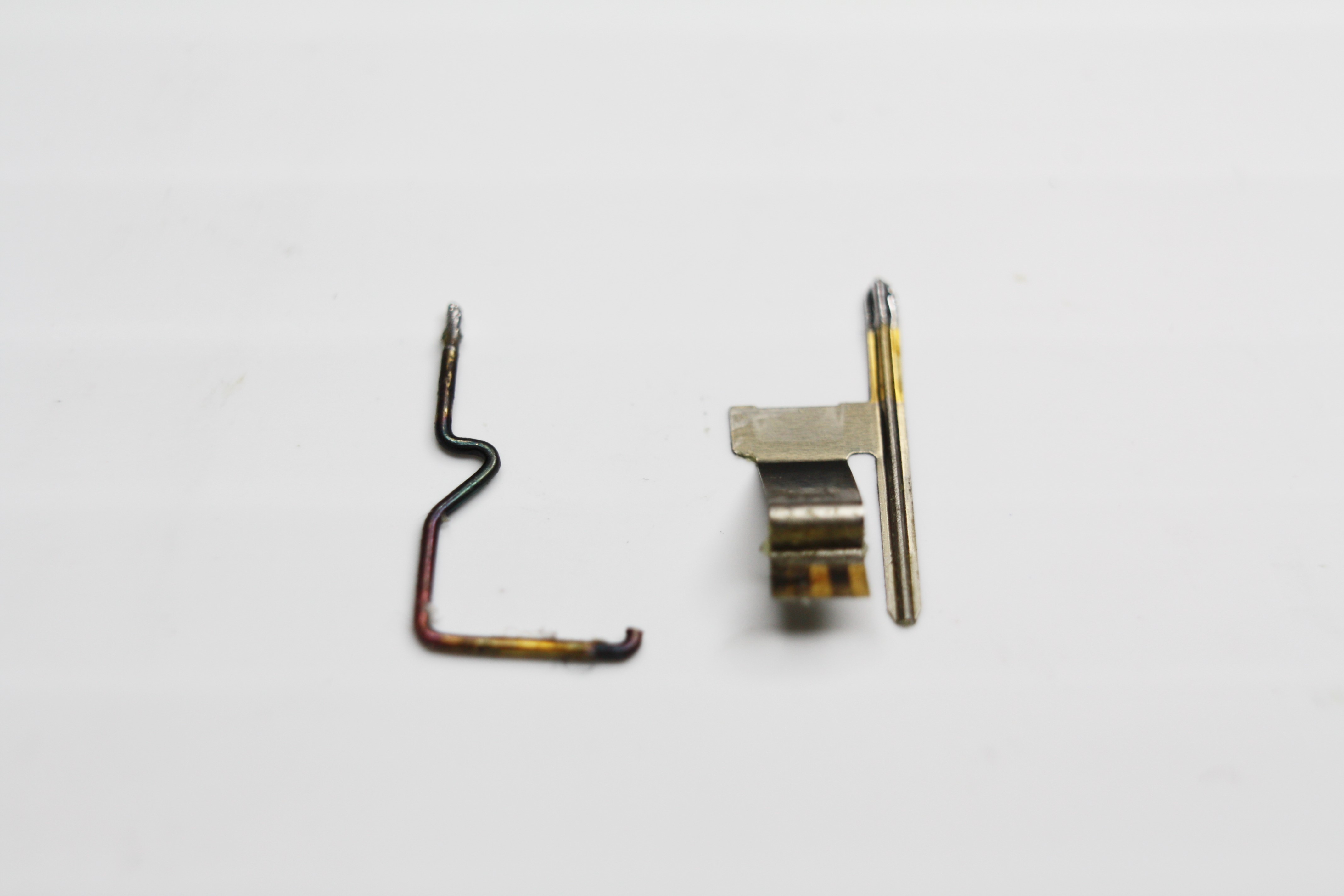EndersKeyboard wrote: They're not disclosing a reason for their existence, apart from saying it's plural contact points. Wouldn't that just add some short circuit potential?
By "short circuit" I guess you're suggesting that one of them could get bent towards the crossbar and hold the switch permanently open.
The multiple-finger approach was not new by this point in time. Older switches that worked similarly include (in chronological order):
[wiki]Hi-Tek linear[/wiki]
[wiki]Stackpole switch grid[/wiki]
[wiki]Hi-Tek Series 725[/wiki]
Patents are listed for all of those types, so you may find a clearer explanation there. Surprisingly only one such patent is cited by the SMK patent.
Lots of switch types on the wiki have patents listed.
The Hi-Tek linear patent notes, "If contamination such as dust or grit should prevent an electrical contact between one pair of the contact points 21 and 22, the remaining contact points 21 and 22 on the remaining fingers 36 and 37 will still form an electrical connection between the contact members 15 and 16."
This implies that the foreign object doesn't hold all four of the contacts apart. Flexible fingers would help there, and I don't know how that interrelates with bounce. Gold contacts are used in part to prevent bounce, as gold is soft and it absorbs impact (according to some other patent I read).
Certainly the SMK contacts didn't seem particularly flexible, so I'm not sure what the specific mechanical objective is. I'm guessing a long flat surface might be considered too easy to go out of alignment, causing virtually none of it to make contact.
Multiple contact points themselves aren't unknown – various Alps clones have two or three contact points and two or three corresponding fingers, and the new iRocks switches (Cherry MX mount Alps clones) have a three-finger arrangement. The only Alps clone patent is for a classic switch with only one finger; Tai-Hao don't recognise the patent so it could be Himake's — old Tai-Hao and Type OA2 are almost identical.)
Crosspoint also has very low current capacity, so the more contact points you have, the more current you can pass. Not an issue for keyboards, but potentially of more concern for use in machinery.


